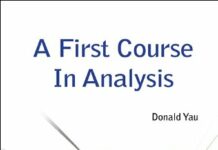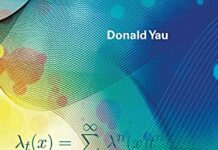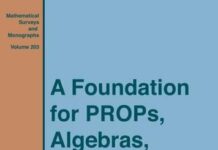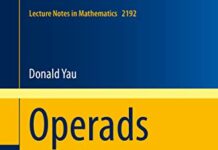
Ebook Info
- Published: 2019
- Number of pages:
- Format: PDF
- File Size: 14.72 MB
- Authors: Donald Yau
Description
This book provides a general and powerful definition of homotopy algebraic quantum field theory and homotopy prefactorization algebra using a new coend definition of the Boardman-Vogt construction for a colored operad. All of their homotopy coherent structures are explained in details, along with a comparison between the two approaches at the operad level. With chapters on basic category theory, trees, and operads, this book is self-contained and is accessible to graduate students.
User’s Reviews
Reviews from Amazon users which were colected at the time this book was published on the website:
⭐In this compact but very interesting work, the author motivates the subject of homotopical quantum field theory as satisfying the need for incorporating gauge theories into algebraic quantum field theory. Readers who follow this line of research will find the book a good summary of what has been done up until now. Readers who are approaching the subject for the first time may have to supplement their study of this book by a considerable amount of outside reading, particularly the references that are given at the end of the book.The author gives the reader a better appreciation of the role of factorization algebras in quantum field theory and their relation to homotopical algebra. In fact if one takes the formalism of algebraic quantum field theory and homotopical algebra, one can obtain an appreciation of the higher categorical structures that are present in quantum gauge theories. Readers of a more mathematical bent but not experts in quantum field theory may view factorization algebras as multiplicative versions of cosheaves. The physicist reader will understand them as being used to encode the structure of observables of perturbative quantum field theory.The book depends heavily on the theory of operads, which can in a loose sense be viewed as generalizations of categories. Dendroidal sets, which are widely discussed in the literature, can serve as geometric models for higher operads, in that just as simplicial sets are related to categories and (infinity, 1)-categories, dendroidal sets are related to operads and (infinity, 1)-operads. A simplicial set consists of simplices, whereas a dendroidal set consists of trees or ‘dendrices”. These have a notion of ‘orientation’ using arrows, with an arrow not starting at a vertex is viewed as a leaf edge, and an arrow not ending at a vertex represents a root edge. The reviewer found it helpful to think about higher operads in terms of dendroidal sets, due mostly to these geometric analogies.The reviewer found that the concept of a coend is best understood in the context of conformal field theory, and in analogy with Feynman diagrams as a sum over intermediate states. The presence of the symbol for integration in the formula for the coend is a good mnemonic for the connection with sums over intermediate states. In addition, the reviewer found it helpful to consult the original literature on the Boardman-Vogt resolution, which in this book is done for colored operads in algebraic quantum field theory.A study of the literature on category theory and categorical homotopy theory will reveal that a coend can be viewed as weighted colimit, or a collection of categorified weighted sums. In the category of sets (and small categories), simple formulas for coends exist that express them as discrete sums of coproducts. Also, valuable intuition on coends can be gathered by noting that Frobenius algebras can be constructed as coends, that factorizable Hopf algebras can be used to construct modular invariant partition functions of charge conjugation as characters of coends, and topological abelian groups can be functorially constructed using coends. In the context of the simplicial category, the coend formula has been described as method by which one can obtain a geometric realization ‘in one step’, namely as taking a disjoint collection of affine n-simplices and pasting them together according to the given face and degeneracy operations.To fully appreciate the content of this book the reader will have to understand the notion of a ‘segment’, which is used extensively. The author’s definition of a segment is difficult to grasp at first glance. The reviewer found it more advantageous to understand it via the examples given in the book, and how the notion is used throughout. The original references that are quoted in the book are also helpful in the understanding of this construction.The real connection with quantum field theory in the book comes in the comparison with what is done with factorization algebras, and readers can either use the book as introduction to the theory of factorization algebras, or as an illustration of a different outlook for factorization algebras. Either way, the book will be useful, and it certain to find a place in the now voluminous literature on the mathematics of quantum field theory and gauge theories.
Keywords
Free Download Homotopical Quantum Field Theory in PDF format
Homotopical Quantum Field Theory PDF Free Download
Download Homotopical Quantum Field Theory 2019 PDF Free
Homotopical Quantum Field Theory 2019 PDF Free Download
Download Homotopical Quantum Field Theory PDF
Free Download Ebook Homotopical Quantum Field Theory




